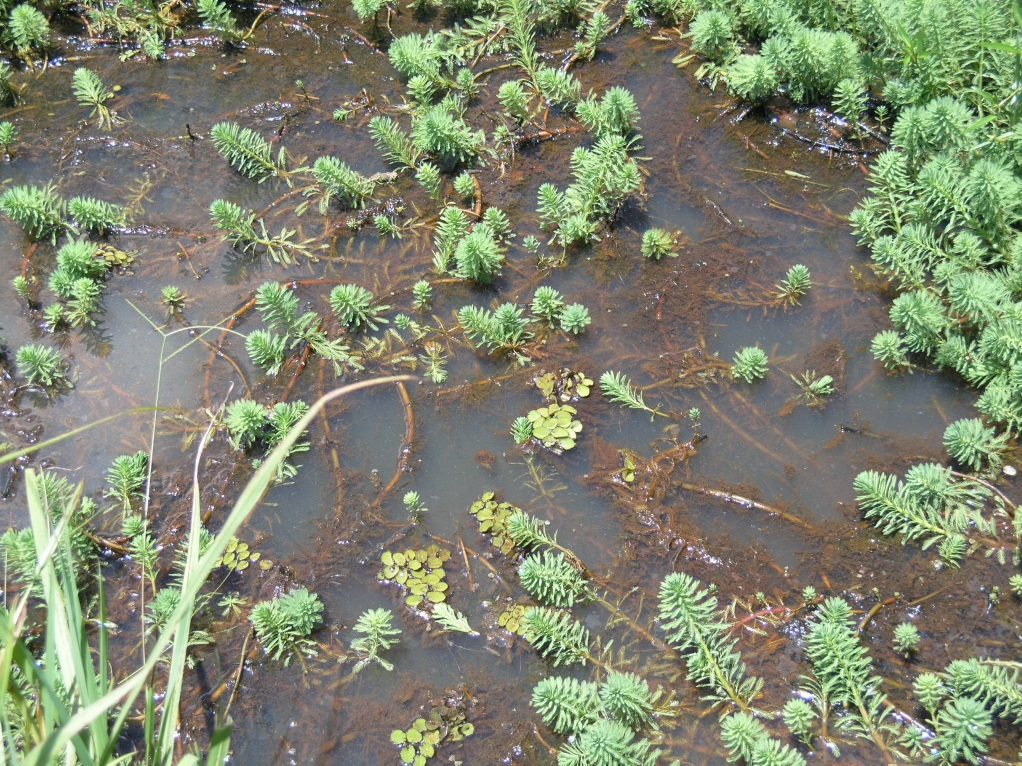Parrot’s feather
Parrot’s feather (Myriophyllum aquaticum) is a semi-submerged aquatic plant, native to South America, that invades in coastal waterways in Eastern Australia. It is usually found on the edges of freshwater bodies such as dams and lakes, as well as in slow-moving waterways and drains.
This sub-project will import from Argentina the promising candidate biocontrol agent for parrot’s feather, the stem-boring weevil Listronotus marginicollis, into an Australian containment facility to undertake host-specificity testing.
Kumaran Nagalingam of CSIRO is leading this sub-project. For further information, please visit: https://research.csiro.au/weed-biocontrol/parrots-feather-biological-control/

An infestation of parrot’s feather (Myriophyllum aquaticum) (Photo: Sue Hayward, NSW WeedWise).


